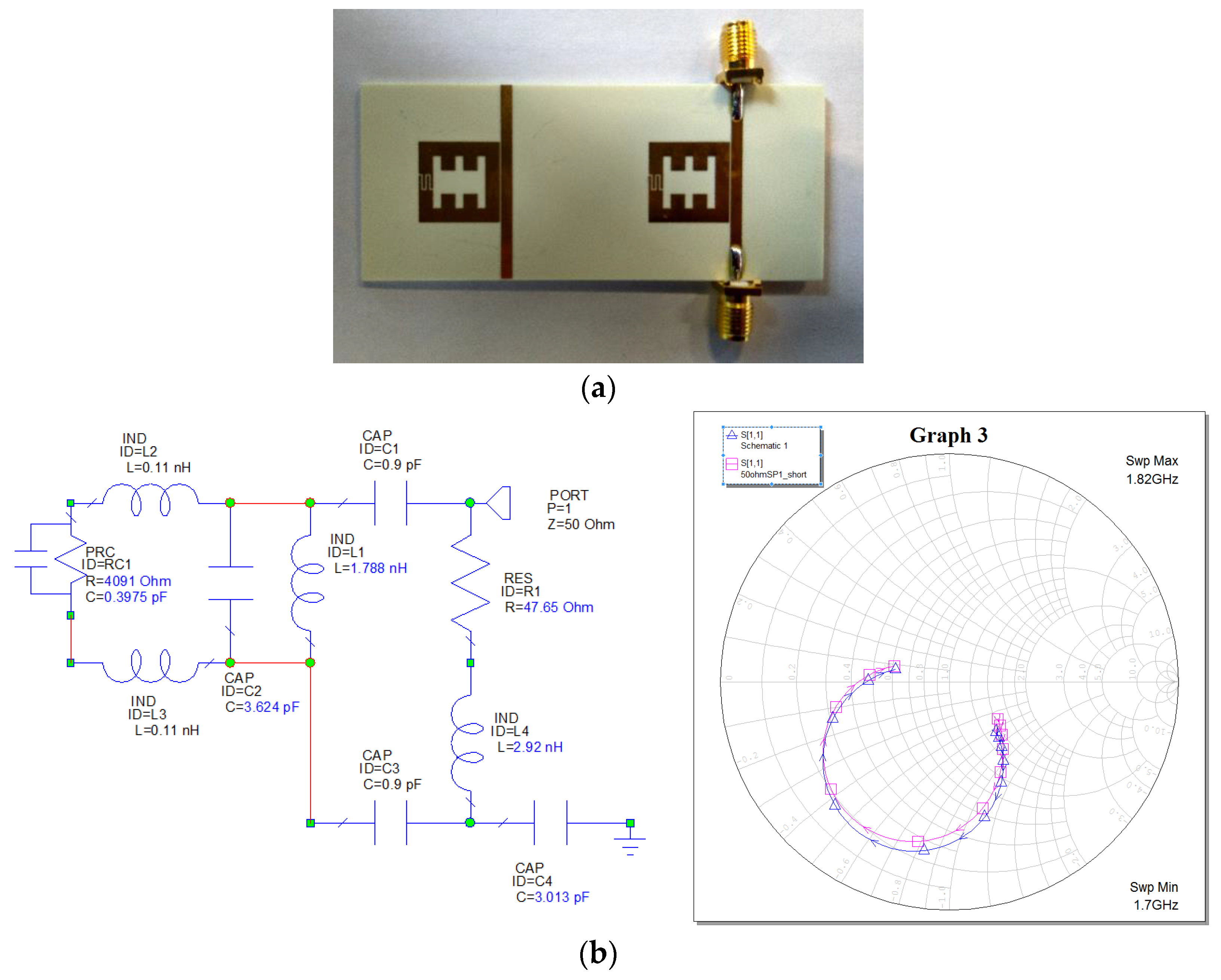Microwave Oscillator Design for a SRR Based Biosensor Platform †
Abstract
:1. Introduction
2. Biosensor Based on High Q Microwave SRRs
Acknowledgments
References
- Pendry, J.B.; Holden, A.J.; Robbins, D.J.; Stewart, W.J. Magnetism from conductors and enhanced nonlinear phenomena. IEEE Trans. Microw. Theory Technol. 1999, 47, 2075–2084. [Google Scholar] [CrossRef]
- Cai, W.; Shalaev, V.; Paul, D.K. Optical metamaterials: Fundamentals and applications. Phys. Today 2010, 63, 57. [Google Scholar]
- Melnik, E.; Muellner, P.; Mutinati, G.C.; Koppitsch, G.; Schrank, F.; Hainberger, R.; Laemmerhofer, M. Local functionalization of CMOS-compatible Si3N4 Mach-Zehnder interferometers with printable functional polymers. Sens. Actuators B Chem. 2016, 236, 1061–1068. [Google Scholar] [CrossRef]
- Wellenzohn, M.; Brandl, M. A Theoretical Design of a Biosensor Device Based on Split Ring Resonators for Operation in the Microwave Regime. Procedia Eng. 2015, 120, 865–869. [Google Scholar] [CrossRef]
- Engelhardt, M. LTSpice; Linear Technology, Inc.: Milpitas, California, USA, 2015; Available online: http://www.linear.com (accessed on 1 April 2018).



Publisher’s Note: MDPI stays neutral with regard to jurisdictional claims in published maps and institutional affiliations. |
© 2018 by the authors. Licensee MDPI, Basel, Switzerland. This article is an open access article distributed under the terms and conditions of the Creative Commons Attribution (CC BY) license (https://creativecommons.org/licenses/by/4.0/).
Share and Cite
Brandl, M.; Wagner, L.-M. Microwave Oscillator Design for a SRR Based Biosensor Platform. Proceedings 2018, 2, 865. https://doi.org/10.3390/proceedings2130865
Brandl M, Wagner L-M. Microwave Oscillator Design for a SRR Based Biosensor Platform. Proceedings. 2018; 2(13):865. https://doi.org/10.3390/proceedings2130865
Chicago/Turabian StyleBrandl, Martin, and Lisa-Marie Wagner. 2018. "Microwave Oscillator Design for a SRR Based Biosensor Platform" Proceedings 2, no. 13: 865. https://doi.org/10.3390/proceedings2130865
APA StyleBrandl, M., & Wagner, L.-M. (2018). Microwave Oscillator Design for a SRR Based Biosensor Platform. Proceedings, 2(13), 865. https://doi.org/10.3390/proceedings2130865




